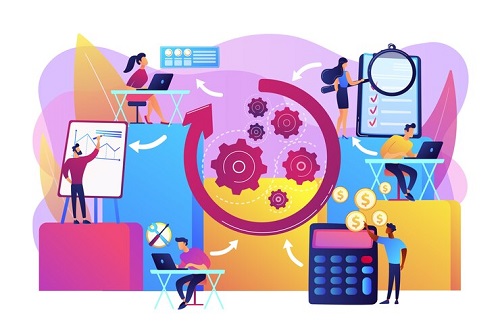In the rapidly evolving world of cloud computing, serverless architecture has emerged as a revolutionary approach, offering scalability, flexibility, and cost-efficiency. However, with these benefits come unique security challenges that must be addressed to ensure compliance and protect sensitive data. This guide delves into the best practices for securing serverless environments, ensuring your cloud operations are both secure and compliant.
Understanding Serverless Architecture
Serverless computing represents a paradigm shift from traditional server-based infrastructure. In a serverless model, cloud providers dynamically manage the allocation of machine resources, allowing developers to focus solely on writing code without worrying about server management. This model offers several benefits, including reduced operational costs, automatic scaling, and faster time-to-market.
The Shared Responsibility Model
In cloud services, the shared responsibility model delineates the security obligations of both the cloud provider and the customer. While providers are responsible for the security of the cloud infrastructure, customers must secure the data and applications they deploy. Understanding this model is crucial for maintaining security and compliance in serverless environments.
Importance of Security and Compliance
Security and compliance are paramount in serverless environments due to the distributed nature of these architectures. Ensuring that applications adhere to security best practices and regulatory requirements helps protect against breaches and data loss, safeguarding both the business and its customers.
Designing Secure Serverless Applications
Creating secure serverless applications begins with adopting secure coding practices and conducting thorough threat modeling. Identifying potential vulnerabilities early in the development process can prevent security incidents later on.
API Gateways and Access Management
API gateways play a critical role in managing access to serverless applications. They serve as a protective layer, controlling and monitoring incoming requests to endpoints. Implementing API gateways helps prevent unauthorized access and ensures that only legitimate traffic reaches your application.
Implementing Least Privilege Access Controls
In serverless environments, applying the principle of least privilege is essential. This means granting functions only the permissions necessary to perform their tasks, reducing the risk of unauthorized access. By limiting permissions, you minimize the potential attack surface and enhance overall security.
Managing Identity and Access
Identity and Access Management (IAM) is a cornerstone of serverless security. Properly managing identities and access controls ensures that only authorized users can interact with your serverless functions.
Best Practices for Credentials and Secrets
Securely managing credentials and secrets is vital to prevent unauthorized access. Use tools like AWS Secrets Manager or Azure Key Vault to store and manage sensitive information securely. Regularly rotate credentials and employ strong authentication mechanisms to further bolster security.
Role-Based Access Control (RBAC)
Implementing Role-Based Access Control (RBAC) allows you to assign permissions based on user roles, ensuring that individuals have access only to the resources necessary for their roles. This approach simplifies access management and enhances security by limiting unnecessary access.
Monitoring and Logging for Compliance
Effective monitoring and logging are critical for detecting and responding to threats in serverless environments. By maintaining comprehensive logs, you can track activities and identify suspicious behavior.
Centralized Logging and Monitoring Tools
Utilize centralized logging solutions to aggregate logs from various serverless functions, providing a unified view of your application’s activity. Tools like AWS CloudWatch or Azure Monitor can help you set up alerts and dashboards for real-time monitoring.
Maintaining Audit Trails
For compliance purposes, maintaining detailed audit trails is essential. These records provide evidence of system activities and help demonstrate adherence to regulatory requirements. Regular audits of these logs can identify potential security gaps and ensure compliance.
Ensuring Data Protection and Privacy
Data protection is a critical concern in serverless environments, where data is often distributed across various cloud services.
Encryption Practices
Encrypting data both at rest and in transit is a fundamental practice for protecting sensitive information. Use strong encryption algorithms and manage encryption keys securely to prevent unauthorized access.
Data Anonymization and Masking
Implementing data anonymization and masking techniques can help protect sensitive information from unauthorized access. These practices ensure that even if data is accessed, it cannot be traced back to individuals, thus preserving privacy.
Compliance with Data Protection Regulations
Adhering to data protection regulations like GDPR is crucial for maintaining compliance. Regularly review your data handling practices to ensure they align with regulatory requirements and protect user privacy.
Automating Security and Compliance
Automation plays a vital role in maintaining consistent security configurations and ensuring compliance in serverless environments.
Infrastructure as Code (IaC)
Using Infrastructure as Code (IaC) allows you to define and manage infrastructure through code, ensuring consistent security configurations across environments. Tools like Terraform or AWS CloudFormation can automate the deployment of secure infrastructure.
Automated Security Testing
Incorporating automated security testing into your CI/CD pipeline helps identify vulnerabilities early in the development process. Tools like OWASP ZAP or Snyk can automate security scans, providing continuous feedback to developers.
Compliance as Code
Implementing compliance as code ensures that security policies are automatically enforced throughout the development lifecycle. This approach reduces the risk of human error and ensures adherence to compliance standards.
Staying Ahead with Continuous Improvement
In the ever-evolving landscape of cloud security, continuous improvement is key to staying ahead of emerging threats.
Regular Security Assessments and Audits
Conduct regular security assessments and audits to identify and address vulnerabilities. These evaluations help ensure that your serverless applications remain secure and compliant over time.
Training and Awareness
Investing in training and awareness programs for your team is essential for maintaining a secure serverless environment. Educate developers and operations staff on security best practices and emerging threats to foster a culture of security.
Embracing a Culture of Adaptation
Encourage a culture of continuous improvement and adaptation to new threats. Stay informed about the latest security trends and technologies, and be willing to evolve your security practices to meet new challenges.
By implementing these best practices, you can secure your serverless applications and ensure compliance in the cloud, protecting your business and its customers from potential threats.



